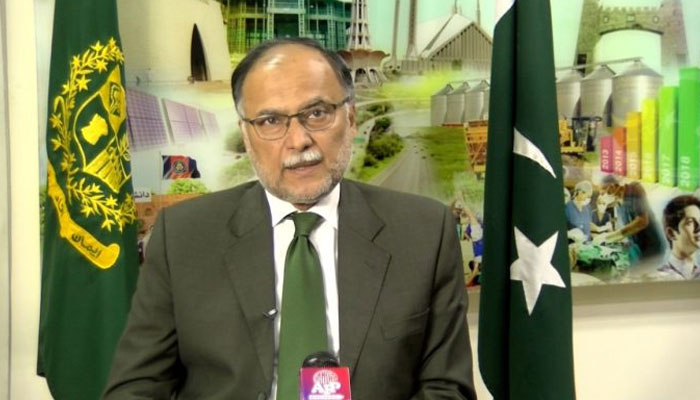
The federal government has approved a development budget of Rs1,100 billion for the fiscal year 2023-24, with Rs950 billion allocated for the Public Sector Development Programme (PSDP) and Rs150 billion for public-private partnership, announced Minister for Planning, Development and Special Initiatives Ahsan Iqbal on Friday.
The increase in budget size reflects the government’s priority for national development and its aim to achieve economic growth. The government is also targeting various goals for the next fiscal year, including GDP growth of 3.5%, reducing inflation and trade deficit, and increasing exports and national savings.
Addressing a press conference, the federal minister said that out of the total budget, Rs950 billion would be utilised under the Public Sector Development Programme (PSDP 2023-24) and Rs150 billion under the public-private partnership to execute different development schemes.
Initially, he said, the finance ministry had proposed Rs700 billion for the PSDP 2023-24 which was extremely insufficient.
“So we made a written request to Prime Minister Shehbaz Sharif to increase the amount of development budget to achieve economic growth, and the PM has approved Rs1,100 billion development budget.”
In 2018, the minister said, he had presented a development budget of Rs1,000 billion, and when the incumbent government came into power last year its size came down to Rs550 billion. “Now after a period of five years, there will be a development budget of Rs1,100 billion, which reflects our priority for national development.”
The country is facing economic difficulties all because of the failed policies of the Pakistan Tehreek-e-Insaf (PTI) government, which during its last year allowed $ 84 billion import of luxury items and obliged friends for showing artificial growth, but the trade deficit mounted to $50 billion, he added.
“It was the turning point that pushed the country into the severe economic crisis that has eaten away all the foreign exchange reserves,” Ahsan added.
He said when the current government took over last year, all the PTI leaders were saying that the country would default in two to six months and there would be a Sri Lanka-like situation.
“But we by the grace of Allah Almighty steer the country out of the crisis despite massive destruction caused by the last year’s floods and the delayed programme of the IMF (International Monetary Fund) by managing imports and taking corrective measures.”
As a result of it, he said, Pakistan was gradually moving towards economic stabilization and foreign investors were coming to invest in diverse fields.
Sharing details of the targets set for the next fiscal year by the Annual Plan Coordination Committee (APCC), Iqbal said 3.5% growth targets had been fixed each for the Gross Domestic Product (GDP) and the agriculture sector, manufacturing 4.3% and services sector 3.6%.
As per the next year’s Annual Development Plan, he said, the inflation rate would be brought down from 29.2% to 21%; the national savings to be increased from 12.5% to 13.4%, exports to be taken over $ 30 billion as compared to the current year’s projected $ 28 billion, $ 58.7 billion import projected for the next year and the trade deficit that currently stood at 1.1%, to be brought down to -1.7 due to revival of the economy.
“We are making efforts with great prudence to completely steer the national economy out of the crisis,” he said while stressing the need for expediting the process of economic revival.
He said the national development revolved around the framework of five Es (Exports, E-Pakistan, Equity, Energy and Environment), which needed vigorous pursuance to pull the country out of the financial crisis and turn around to a stable platform.
The planning minister said the government is making efforts to complete the ongoing projects which were at the advanced or middle of the stages on priority so that the burden of throw-forward development schemes could be curtailed.
